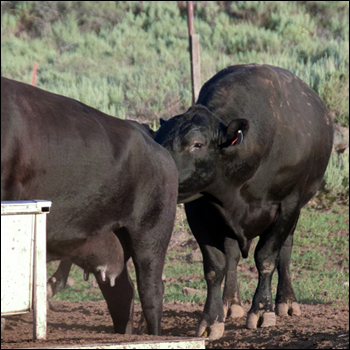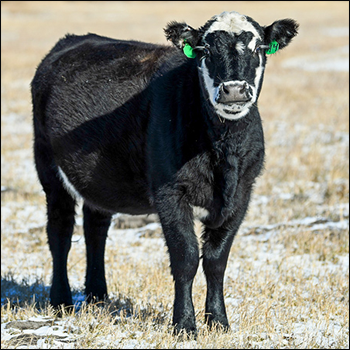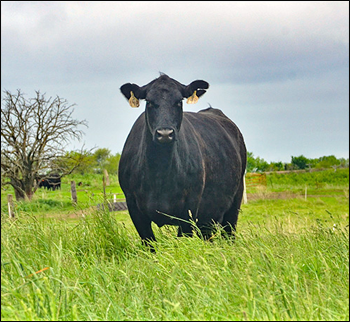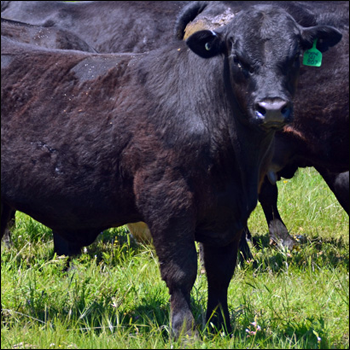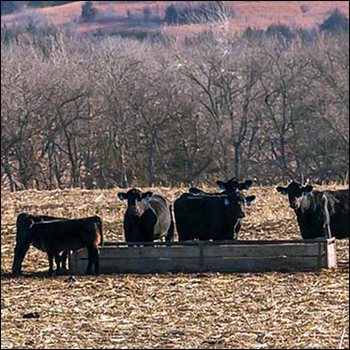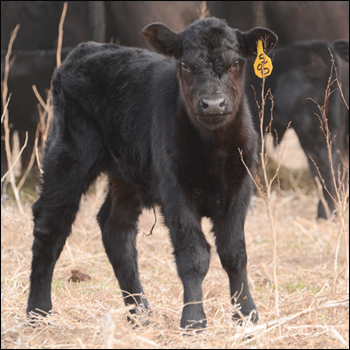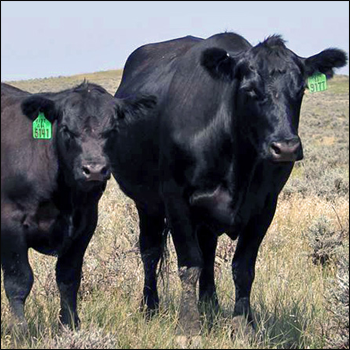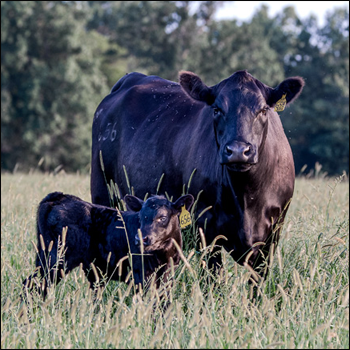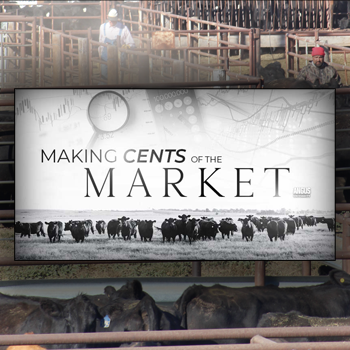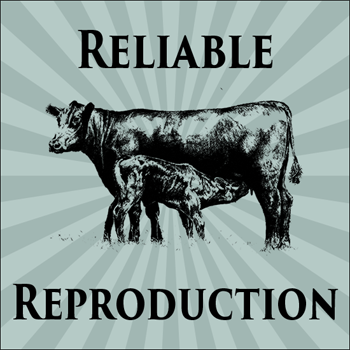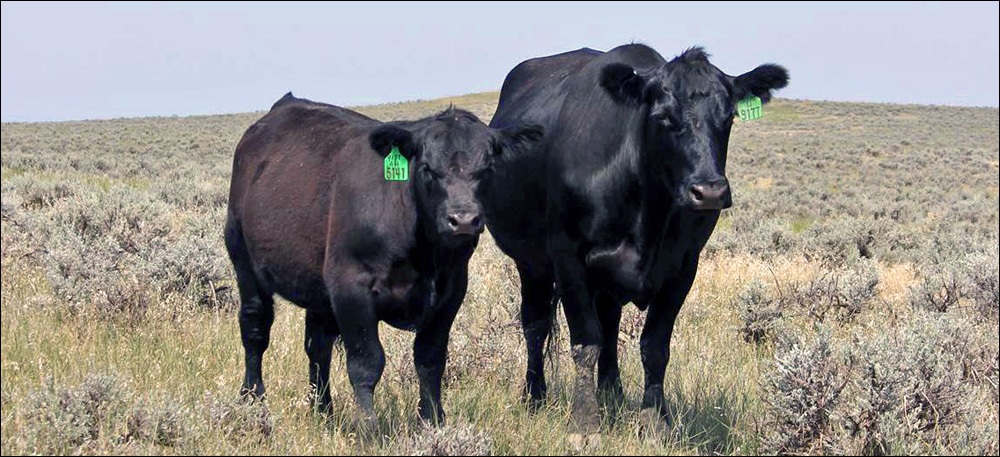
Preweaning Nutrition Crucial for Bull Fertility
Early nutrition determines whether the full genetic potential for testes development in young bulls is met.
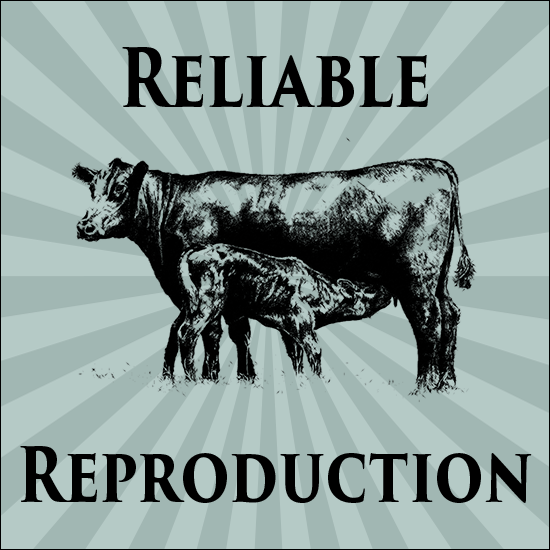
The first few months of a bull’s life directly affect his future fertility, but often producers and researchers alike assume the cow is going to feed him adequately, says John Kastelic, professor of cattle reproductive health at the University of Calgary. However, the age of that dam comes into play into the quality of the nutrition she provides.
Research in the 1970s at Colorado State University, looking at scrotal circumference in yearling bulls, came up with an adjustment formula.
“If the bull had a heifer for a mother, you added 1.5 centimeters to his yearling scrotal circumference (because heifers’ calves tend to be smaller as yearlings and catch up later), and if he had a really old dam, you also added a small amount of correction — for maternal nutrition,” he says.
“The work in dairy bulls clearly showed that bulls fed really well early in life reached puberty quicker, had larger testes and produced more sperm. This was also our finding with beef bulls. If we fed them very well prior to about 6 months of age, we could hasten puberty a little; but, more importantly, [we] could increase testis size and number of sperm produced.”
To prove this, a feeding trial was done with several groups of young bulls. One group received 100% of protein and energy requirements as a baseline. Another group received just 70% of those requirements, and a third group received about 130% of requirements. The three groups were getting 70%, 100% and 130% of their required energy and protein, respectively, but all bulls received adequate minerals and vitamins.
“We fed that ration from 6 weeks of age to 25 weeks. We found that the bulls on the 130% ration, compared to the bulls that were on 70%, reached puberty about a month earlier and had testes 20% to 30% bigger, producing 20% to 30% more sperm than the bulls on the 70% ration,” Kastelic says.
There was no indication that feeding the bulls extra at an early age harmed sperm quality, he says. There was simply more epididymal sperm reserve.
Looking at what might be changing due to the extra feed, the researchers found that it involved luteinizing hormone (LH).
“This hormone is released from the pituitary gland at the base of the brain, and goes to the testes and causes release of testosterone. Starting at about 6 to 8 weeks of age in the young bull, there is an increase in this hormone, and it stays relatively high until about 20 to 25 weeks and then decreases. The nature of that increase, how high it gets, and how often it is released has a big impact on what happens later in the bull’s life,” says Kastelic.
“We found that when we fed the bulls really well, we could substantially increase the amount of LH. There were profound differences in those bulls in that early phase of growth. At that age, testosterone levels are quite low, but what happens at that time sets the bull up for the rest of his life. So by feeding really well during those weeks, we bumped that LH up, and saw all the other changes thereafter.”
If the bulls were fed really well for the first 25 weeks and then backed off on feed, they still did well with sperm production. Their testes continued to grow rapidly, even though they were on a normal diet of 100% of requirements, without extras. He explains that if they held the bulls back in growth through the first 25 weeks and then supplemented them, giving them 130% of their nutrients, there were different results. This would be like having a heifer for a mother — not as much milk as an older cow — and then getting a lot of protein and energy after weaning.
“We found that, even with the additional supplement, we could not rescue those bulls. The future course of testes development was already set. They were on a trajectory to be underachievers. That bull cannot reach his genetic potential for testes development. Thus, the key to optimizing a bull’s future fertility is to provide extra nutrition early in life (from about 6 weeks of age to about 25 weeks), and from that point on, we can just feed them a balanced diet for growth,” he says.
On a practical basis, bull producers could creep-feed young bulls out of first-calf heifers. This would help all bulls destined to become breeding bulls, but especially any young bull that might not have a high-milking dam, he admits.
This is the opposite of what we know about heifer development; a young heifer with a high-milking dam or eating creep feed may put too much fat in her young udder and never milk as well in adulthood as a heifer that was not allowed to get so fat as a calf.
“You probably want young bulls gaining close to 3 pounds per day while they are on their mothers, and then just back off a bit at weaning, and the bulls are fine,” Kastelic says. “That’s the key, but you don’t want to feed your heifer calves that way. You’d have to separate them and their mothers into a different pasture.”
This would allow breeders to achieve full genetic potential for testes development in the young bulls.
“There have been many studies looking at scrotal circumference and how it is highly heritable. In addition, there is quite a bit we can do just with management. The key is to supplement bulls prior to weaning and then just back off and grow them. There has been a lot of study looking at postweaning nutrition, and that’s the time we should not be ruining them by overfeeding. We tried that for several decades and it didn’t work,” he says.
Editor’s note: Heather Smith Thomas is a cattlewoman and freelance writer from Salmon, Idaho. Photo courtesy Sorenson Powder River Ranch.

Angus Proud
In this Angus Proud series, Editorial Intern Jessica Wesson provides insights into how producers across the country use Angus genetics in their respective environments.
 Angus Proud: Scott Sproul
Angus Proud: Scott Sproul
Oklahoma operation learned wisdom of moving calving season to better suit their marketing needs.
 Angus Proud: Bubba Crosby
Angus Proud: Bubba Crosby
Fall-calving Georgia herd uses quality and co-ops to market calves.
 Angus Proud: Jim Moore
Angus Proud: Jim Moore
Arkansas operation retains ownership through feeding and values carcass data.
 Angus Proud: Les Shaw
Angus Proud: Les Shaw
South Dakota operation manages winter with preparation and bull selection.
 Angus Proud: Jeremy Stevens
Angus Proud: Jeremy Stevens
Nebraska operation is self-sufficient for feedstuffs despite sandy soil.
 Angus Proud: Dave Rutan
Angus Proud: Dave Rutan
Angus breeder gets the most out of his bull investment by partnering with opposite calving-season operation.
